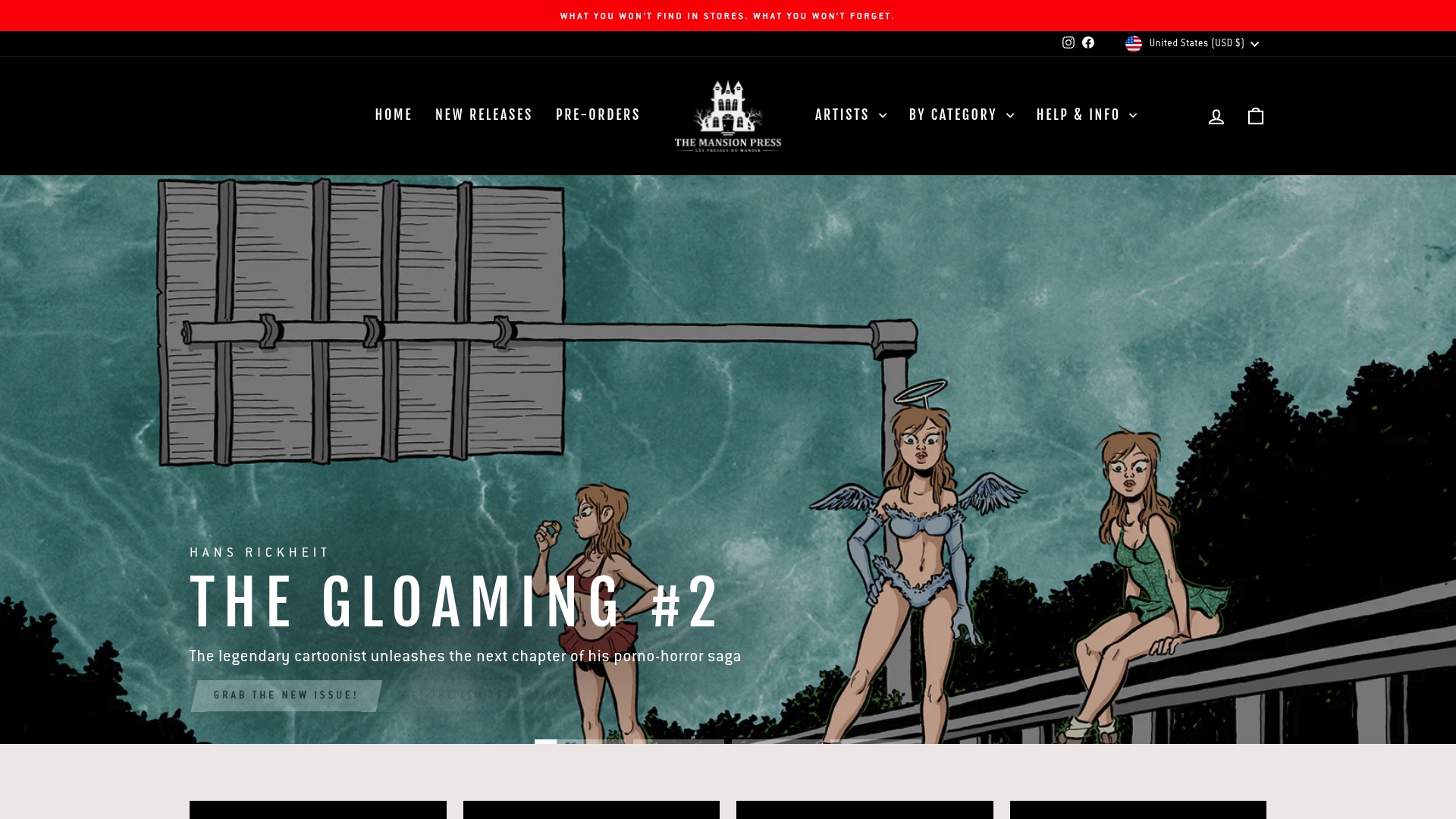Master DIY Artist Bookmaking: Create Unique Art Books
Building your own artist book feels intimidating at first. You might expect that you need expensive tools or rare materials to achieve gallery worthy results, yet artists around the globe are creating one of a kind books using nothing more than basic supplies and bold ideas. Some of the most stunning handmade art books start with just carefully selected paper types and a solid bone folder, proving that your vision matters much more than any fancy equipment.
Table of Contents
- Step 1: Gather Your Materials And Tools
- Step 2: Design Your Book Layout
- Step 3: Create And Assemble Your Pages
- Step 4: Bind Your Book With Sturdy Techniques
- Step 5: Finalize Your Book With Personal Touches
Quick Summary
| Key Point | Explanation |
|---|---|
| 1. Select Quality Materials | Choose high-quality, archival paper and binding supplies to enhance the durability and aesthetic of your book. |
| 2. Design Thoughtful Layouts | Create cohesive page layouts with consideration for flow and visual interaction, ensuring an engaging reader experience. |
| 3. Assemble Pages with Care | Use precise cutting and alignment techniques for a polished look, and experiment with artistic methods that reflect your style. |
| 4. Employ Strong Binding Techniques | Opt for binding methods like coptic stitch for durability and aesthetics, ensuring your book opens smoothly and remains intact. |
| 5. Add Personal Touches | Enhance your book’s uniqueness with mixed media covers, signatures, and protective treatments for longevity and deeper storytelling. |
Step 1: Gather Your Materials and Tools
Successful diy artist bookmaking begins with carefully selecting and preparing the right materials. Before diving into the creative process, assembling a comprehensive toolkit will ensure smooth and professional results. The quality and variety of your materials directly influence the final artistic outcome of your handmade book.
Essential Bookmaking Materials
Your foundational toolkit for diy artist bookmaking should include several key components. Start with high quality paper that supports your artistic vision. Consider different weights and textures like watercolor paper, Bristol board, or handmade specialty papers that can withstand various artistic techniques. For binding, you will need sturdy materials such as bookbinding thread, waxed linen thread, or strong cotton string.
A reliable set of tools makes the difference between an amateur and professional result. Essential tools include:
- Sharp craft knife or precision cutting blade
- Metal ruler with clear measurement markings
- Bone folder for crisp paper creases
- Cutting mat to protect work surfaces
- Awl or specialized bookbinding needle for creating precise holes
- Heavy duty scissors
Paper selection requires thoughtful consideration. According to the Metropolitan Museum of Art’s conservation resources, choosing archival quality materials ensures your artistic book will remain pristine and structurally sound over time. Professional artists recommend testing paper compatibility with your intended artistic medium before beginning your project.
Workspace preparation is equally crucial. Organize your materials on a clean, flat surface with excellent lighting. Protect your work area with a cutting mat and ensure you have ample space to spread out your materials. Natural light helps you accurately assess paper colors and detect subtle texture variations.
Remember that patience and precision matter more than having the most expensive tools. Many successful artist books start with basic materials and creative vision. Your unique approach will transform standard supplies into an extraordinary artistic statement. Take time to familiarize yourself with each tool, practicing careful handling and understanding their specific functions in the bookmaking process.
Step 2: Design Your Book Layout
Designing your book layout transforms raw materials into a cohesive artistic narrative. This critical step determines how viewers will experience your visual story, requiring thoughtful consideration of composition, page flow, and overall aesthetic vision. Successful diy artist bookmaking depends on creating a layout that communicates your unique artistic perspective.
Conceptualizing Your Visual Narrative
Begin by sketching preliminary layout concepts on inexpensive draft paper. Experiment with different page orientations like portrait, landscape, or unconventional diagonal arrangements. Consider how each page will interact with the next, creating visual rhythms and connections that guide the viewer’s eye through your artistic journey. Some artists prefer linear progressions, while others design more abstract, non sequential layouts that challenge traditional book structures.
Page sizing and proportion play crucial roles in your design. Standard book dimensions range from compact 5x7 inch formats to larger 11x14 inch presentation styles. Check out our guide on diy artbook publishing for additional inspiration on professional layout techniques. Select dimensions that complement your artwork and provide sufficient space for visual storytelling.
Technical considerations are equally important. Measure and mark potential page locations precisely, leaving consistent margins for binding. Use light pencil guidelines that can be easily erased later. Create a master template that you can replicate across all pages to maintain visual consistency.
 This approach ensures structural integrity and professional presentation.
This approach ensures structural integrity and professional presentation.
Your layout should reflect intentional design choices. Think about negative space, image placement, and how different elements interact. Some artists prefer full page spreads, while others create intricate collage style compositions with multiple visual elements. Consider how text annotations, if included, will integrate with your artwork.
Verify your layout by creating a rough mockup. Physically arrange draft pages to assess flow and visual balance.
Step back and critically examine how the pages communicate as a complete artistic experience. Look for areas that feel disconnected or require refinement. This iterative process transforms initial concepts into a polished, compelling artistic book design.
Step 3: Create and Assemble Your Pages
Assembling your diy artist book pages requires precision, creativity, and careful technique. This step transforms your initial design concept into a tangible artistic artifact, demanding both technical skill and artistic intuition. The process involves transferring your visual ideas onto selected pages while maintaining structural integrity and aesthetic vision.
Begin by preparing your workspace with clean, organized surfaces. Protect your working area with a cutting mat and ensure excellent lighting that reveals subtle details. Transfer your design sketches onto high quality paper using light pencil marks that can be easily erased later. Work methodically, focusing on one page at a time to maintain consistency and prevent potential errors.
When creating your pages, consider multiple artistic approaches. Some artists prefer digital printing for precise reproduction, while others embrace hand rendering techniques like watercolor, ink drawing, or mixed media collage. Learn more about innovative comic and art book techniques to expand your creative possibilities. Experiment with layering techniques, incorporating textures, and exploring unconventional material combinations that reflect your unique artistic voice.
Page assembly requires careful attention to alignment and structural considerations. Use a metal ruler and sharp craft knife to create clean, precise page edges. For multi page designs, ensure each page is cut to identical dimensions. When working with multiple artistic mediums, test paper compatibility to prevent warping or color bleeding. Some artists create test sheets to verify how different materials interact before committing to final page production.
Verification is crucial in this stage. Lay out all pages in sequence, checking for visual flow, color consistency, and structural alignment. Look for any imperfections in cutting, potential color variations, or areas requiring refinement. A critical eye during this phase prevents potential issues in later binding stages. Take time to step back and view your pages holistically, assessing how individual elements contribute to the overall narrative of your artist book.
Remember that imperfections can become intentional artistic choices. Small variations might add character and uniqueness to your handmade book. Trust your creative instincts while maintaining technical precision. Your goal is to create a cohesive visual experience that communicates your artistic vision effectively.
Step 4: Bind Your Book with Sturdy Techniques
Bookbinding transforms individual pages into a cohesive artistic object, representing the critical junction where design meets structural integrity. This step demands precision, patience, and a methodical approach to ensure your diy artist book remains durable and visually compelling. The binding technique you choose will directly impact the book’s aesthetic and functional qualities.
Traditional bookbinding methods offer multiple approaches for artists. The coptic stitch binding provides exceptional flexibility, allowing your book to open completely flat and creating an exposed binding that becomes an artistic element itself. This technique requires careful hole punching and systematic threading using waxed linen thread. Measure page margins precisely, marking consistent hole locations to maintain alignment. Use an awl to create clean, uniform punctures through all pages simultaneously, ensuring structural evenness.
Prepare your binding materials meticulously. Select strong bookbinding thread in colors that complement or intentionally contrast with your page design. Explore advanced bookbinding techniques in our comprehensive artbook collection guide for additional inspiration. Waxed threads provide extra durability and smoother stitching, reducing friction and potential page damage during the binding process.
When executing your binding, work systematically and maintain consistent tension. Start from the center of your book signatures, creating methodical stitching patterns that securely connect pages without excessive strain. Professional bookbinders recommend practicing on scrap paper before attempting your final artwork to develop muscle memory and understand thread movement.
Alternative binding techniques include Japanese stab binding, which creates beautiful exposed spine designs, and pamphlet stitch methods suitable for smaller publications. Each technique offers unique aesthetic possibilities.
The following table compares popular bookbinding techniques mentioned in the guide to help you choose the best approach for your DIY artist book.
| Binding Technique | Key Features | Best For | Aesthetic Impact |
|---|---|---|---|
| Coptic Stitch | Opens completely flat; exposed decorative spine | Art books, sketchbooks | Artistic, intricate look |
| Japanese Stab Binding | Decorative exposed spine with visible stitching | Small books, zines | Elegant, traditional feel |
| Pamphlet Stitch | Simple, fast binding for thin books | Minimalist projects | Clean, subtle presentation |
Verification involves carefully testing your book’s structural integrity. Open and close the book multiple times, checking for smooth page movement and secure thread connections. Gently flex the spine to ensure threads remain taut but not overstressed. A well bound book should feel solid yet flexible, with pages turning smoothly without unnecessary resistance.

Remember that bookbinding is both technical skill and artistic expression. Embrace small imperfections as part of the handmade character. Your unique binding approach becomes another layer of artistic storytelling, transforming individual pages into a unified creative statement.
Step 5: Finalize Your Book with Personal Touches
The final stage of diy artist bookmaking transforms your technical creation into a deeply personal artistic statement. This crucial step elevates your book from a mere collection of pages to a unique creative artifact that reflects your individual artistic vision. Personal touches not only enhance visual appeal but also communicate the deeper narrative and emotional context of your work.
Consider developing a distinctive cover design that encapsulates the book’s essence. Experiment with mixed media techniques like embossing, fabric overlays, or hand painted elements that provide tactile and visual intrigue. Some artists incorporate unexpected materials such as vintage paper, translucent vellum, or textured cardstock to create compelling exterior presentations. Your cover serves as the first impression and invitation into your artistic world.
Signature and documentation add professional and personal dimensions to your artwork. Explore innovative artbook publishing techniques to understand how professional artists approach final presentation. Create a distinctive artist signature page, potentially including details like creation date, edition number, or a brief artist statement. This documentation transforms your book from a personal project into a potential collector’s item.
Protective treatments can dramatically enhance your book’s longevity and aesthetic quality. Consider applying archival quality sealants or protective sprays that preserve page integrity without compromising artistic details. Select treatments compatible with your specific artistic media, whether watercolor, ink, digital prints, or mixed techniques. Test any protective coating on a small, inconspicuous area first to ensure it does not alter your original artistic vision.
Authentic personal touches might include handwritten notes, unique page numbering styles, or subtle embellishments that tell a deeper story. Some artists incorporate hidden elements like folded inserts, translucent pages, or unexpected color shifts that reward careful viewers. These details transform your book from a static object into an interactive artistic experience.
Verification involves a comprehensive review. Examine your book under different lighting conditions, checking for consistent color, secure binding, and intentional design elements. Rotate the book, observing how light interacts with different pages and surfaces. Ask trusted artist friends or mentors to provide objective feedback, offering fresh perspectives on your creative approach.
Below is a checklist summarizing verification steps to ensure your DIY artist book is complete and well-crafted.
| Verification Step | What to Check | Why It Matters |
|---|---|---|
| Page Consistency | Check that all pages are uniform in size and properly aligned | Ensures professional, polished appearance |
| Binding Integrity | Flex the spine and turn pages to test for secure stitching and smooth movement | Prevents pages from loosening or detaching over time |
| Artwork Quality | Examine each page for consistent color, no smudges, and clear details | Maintains the aesthetic standard and visual narrative |
| Protective Coating | Confirm that any sealants or treatments do not alter page appearance | Protects artwork without compromising original vision |
| Cover and Personal Touches | Review cover design and added elements like signatures or embellishments | Enhances uniqueness and collector value |
| Final Inspection | View the book under various lighting; ask for outside feedback | Catches issues missed earlier and improves final result |
Ultimately, your diy artist book represents a deeply personal journey of creative expression. Embrace the unique imperfections and spontaneous details that emerge during the process. Each handmade book tells a distinctive story far beyond its physical components.
Turn Your DIY Art Book into a Collector’s Gem
As you have discovered through mastering diy artist bookmaking, creativity and craftsmanship transform ordinary materials into striking works of art. But turning your unique handmade book into something collectors and art lovers truly value can be overwhelming. Maybe you worry that your artistic vision will not reach the right audience or your work will not stand out among mass-produced options. At The Mansion Press, we champion independent creators like you. Our curated marketplace gives your art the stage it deserves, connecting passionate artists and comic makers with dedicated collectors seeking originality and authenticity.

Your creative journey does not end with the last binding stitch. Give your one-of-a-kind book a real chance to shine. Explore how The Mansion Press can help feature your personal artbooks among exclusive and limited-edition offerings. Visit our site now to see how simple it is to share your handmade story with a global audience and browse inspiring examples from other makers. Start elevating your artbook into a true collectible today.
Frequently Asked Questions
What materials do I need for DIY artist bookmaking?
To start DIY artist bookmaking, gather high-quality paper, bookbinding thread, a sharp craft knife, a metal ruler, a bone folder, and heavy-duty scissors. Make sure to choose paper types that align with your artistic vision, such as watercolor or Bristol board.
How do I design my book layout effectively?
A successful book layout involves sketching preliminary concepts on draft paper, experimenting with different page orientations and sizes. Aim for a cohesive visual narrative by maintaining consistent margins and visual flow across all pages.
What binding techniques should I consider for my artist book?
Consider traditional binding methods like coptic stitch or Japanese stab binding for unique artistic effects. These techniques allow the book to remain flexible and visually appealing, so practice your chosen method on scrap paper before working on your final project.
How can I add personal touches to my completed art book?
Incorporate unique elements like mixed media covers, handwritten notes, or distinctive artist signature pages for a personal touch. Experiment with unexpected materials to enhance visual interest and make your book a true reflection of your artistic journey.
What steps can I take to ensure my book is structurally sound?
Ensure structural integrity by meticulously measuring and cutting pages for uniformity and checking binding techniques for secure connections. Flex the spine gently after binding to confirm that pages move smoothly, and adjust any tension issues before finalizing your book.
Recommended
- DIY Artbook Publishing: Create Stunning Visual Collections – The Mansion Press
- Mastering Building an Artbook Collection: A Practical Guide – The Mansion Press
- What Defines an Artbook? Understanding the Essentials – The Mansion Press
- Understanding Artbook Collecting Basics for Enthusiasts – The Mansion Press

